Events are part of the marketing plan of many businesses. Usually aiming to build a customer base and promote brand awareness, events are among the oldest tools in a marketer’s toolbox.
Of course, the pandemic stumped in-person events. However, marketers found ways to promote their brands with online events. Online events proved so convenient that more and more people attended those. However, the pandemic changed our day-to-day lives, making us, as consumers, go online for good.
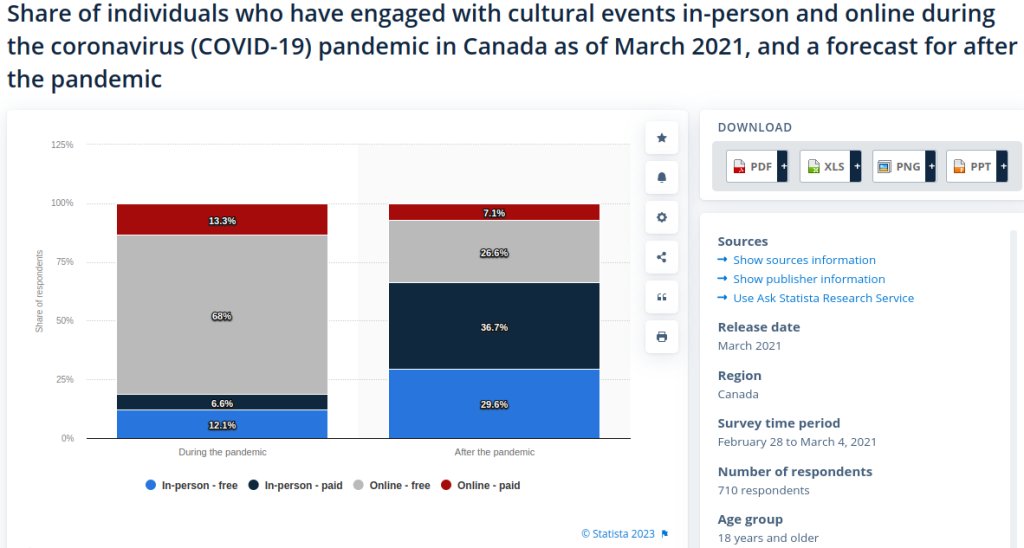
The statistic above showcases the state of event participation in Canada alone. This statistic proves that events are a brilliant marketing idea, especially if your brand is a small business on a budget.
But the issue with this is understanding your audience. So much so that turning your event into a successful one worth the time and resources is possible.
Your event doesn’t have to be strictly digital, in-person, or hybrid. It could be anything your audience prefers. You need to nail your campaigns and understand a thing or two about the prospects you want to draw in with your marketing actions.
Such understanding can take a lot of time and effort. Or it can be done in seconds using the right promotional tools and platforms to help you reach your goals.
And email marketing is, undoubtedly, the most fruitful and cost-effective promotional tool in digital marketing. Let’s see how you can achieve maximum event attendance with email marketing.
Why Email Marketing for Events?
Brands and organizations use digital marketing to promote their events, discounts, and content. And email marketing is one of the most popular mediums to achieve that.
An event is the perfect place to build an email list, and an email campaign is the perfect medium for exciting branded content. So, to get your audience to receive this exciting branded content and share their data with you, create a dedicated landing page or pop-up form that gently leads your prospects into subscribing.
Email marketing for events can help you gather leads, nurture them, and familiarize them with your brand, business, or establishment. Now, let’s see how you can achieve those in more detail.

What Happens After Your Users Subscribe?
Your best bet would be to follow some specific steps:
- Don’t wait until you have an offer cut out for them to start your email marketing campaign. The reason behind this is that you need to nurture your leads. You can remain relevant by creating content for all sales funnel stages.
- Be an expert storyteller in your email marketing efforts and keep your brand top-of-mind through all instances. Use content that stems from their actions to achieve that. Tailor-made automation triggers will help you immensely.
- Be consistent in your email marketing efforts. That way, they’ll know what to expect and when to expect it.
- Segment and personalize accordingly, and always promote what your users want to see. You can do that by making sure to bake the event’s content into every email you send them from the moment they subscribe. For example, I attended almost all online archaeology events I came across during the first wave of COVID in March 2020. I still receive relevant emails, and I love them.
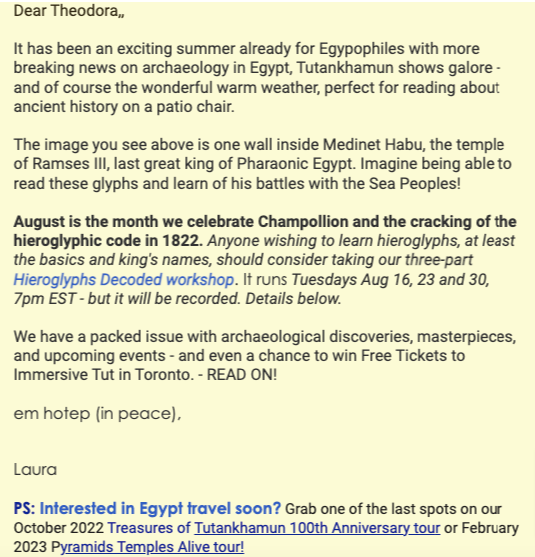
However, what I loved the most about those emails was that they were organized down to a tee. I received teaser emails with content that led up to my first big event. Before mentioning the speakers, the organization ensured that I was familiar with its objectives, content, and presence.
After that, I received emails about the speakers and their credentials – for an archaeology enthusiast, credentials are fundamental. Not to mention how nobody likes to waste their time attending an event that can give them next to zero new information.
In my personal experience, email marketing made me anticipate every new online event from March 2020 until their latest event, which was August 2022.
Gather the Right Leads
When organizing your event email marketing efforts, the first thing to know is to send the right message to the right people at the right time.
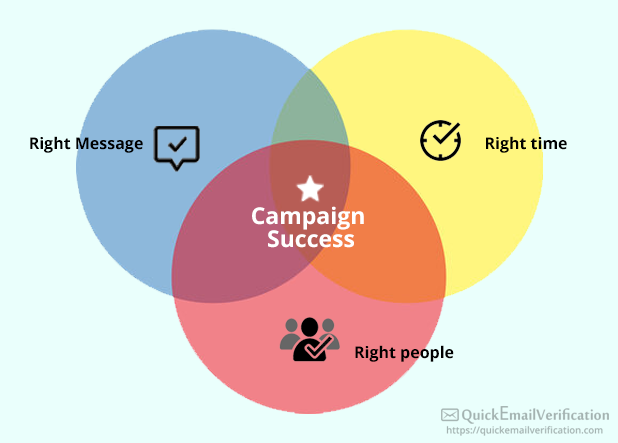
To do so, you will need to gather the right leads, first and foremost. Building an email list that makes sense is essential, but marketers must remember that not all leads are good leads. After all, an email list is your most prized possession regarding email marketing for events. This means that it needs to be healthy, pruned, and optimized right off the bat.
For this, you will need the following:
- Excellent buyer personas
- A powerful landing page
- A double opt-in process
- A legitimate email list
- Constant updating
To attract interested leads to your email list, create buyer personas. They are the representation of your ideal customer. Use demographic and psychographic data to make that possible.
This will give you a better understanding of how to create a landing page that will get valuable users to subscribe to your email list. It would be best if you had users that are happy and willing to interact with your content and your brand as a whole.
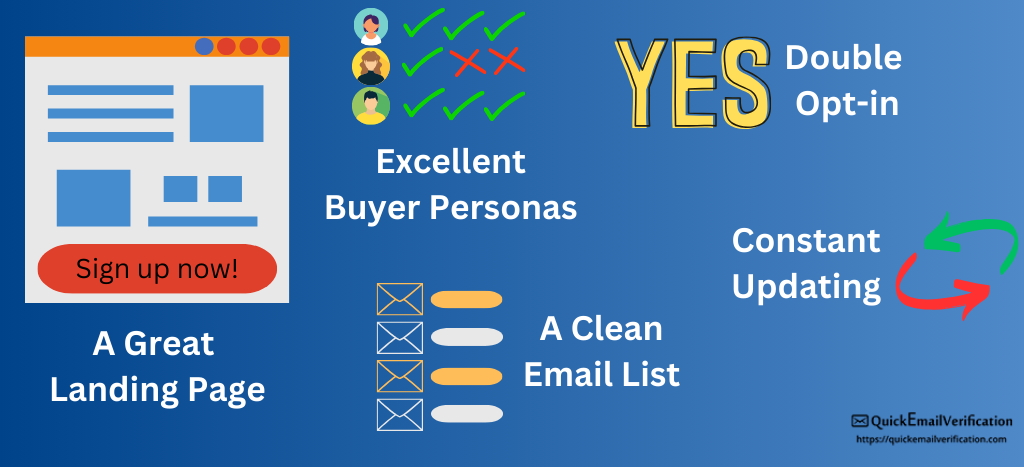
Are You Sure Your Leads Are Valuable?
To ensure you attract those interested leads, make sure to use double opt-in. This process makes new leads confirm their email address when subscribing to your email list.
It may sound counterintuitive, but this process will ensure the leads are interested in your content and happy with what they receive. Users with fake email addresses won’t be able to opt-in right off the bat. Non-interested users, on the other hand, will never confirm their email as it will sound like a hassle.
After creating an email list, you’ll need to prune it every so often – twice a year will do the trick for you. Pruning aims to remove old addresses that are not in use anymore and users who never interact with your content or open your emails anyway.
At this stage, let me point out that your email list should be legitimate. This means that you cannot purchase an email list. It violates GDPR and could break your brand’s credibility and dramatically lower your deliverability score.
Just imagine sending the perfect email to a person who doesn’t know your brand. More than most people use the “Mark as spam” button when receiving such emails – especially when the “Unsubscribe” button is hard to find. And multiple spam complaints can go as far as getting you banned from your ESP.
Don’t risk your reputation and email deliverability score by using a list you didn’t grow organically.

Segment and Personalize Your Event Email
Once you grow your email list to a bigger size you want to be more careful. Have a separate strategy for risky email addresses like role addresses or accept-all addresses. An email blast and non-personalized content, for instance, could be harmful. Which is why you want to start segmenting and personalizing your event emails.
To do so, you will need an email marketing and marketing automation platform. It will help you create micro-segments and take advantage of the slight differences that make each audience member unique. Segmentation will help you achieve personalization. Personalization will, in turn, help you reach higher open rates and improve your Click-Through Rate (CTR) and your traffic as a whole.
Event email personalization is, of course, more complex than eCommerce personalization. Let me use my previous example.
The event I attended was perfect for the segment that included leads interested in archaeology. This fact alone made it unsuitable for the segment that included professional archaeologists.
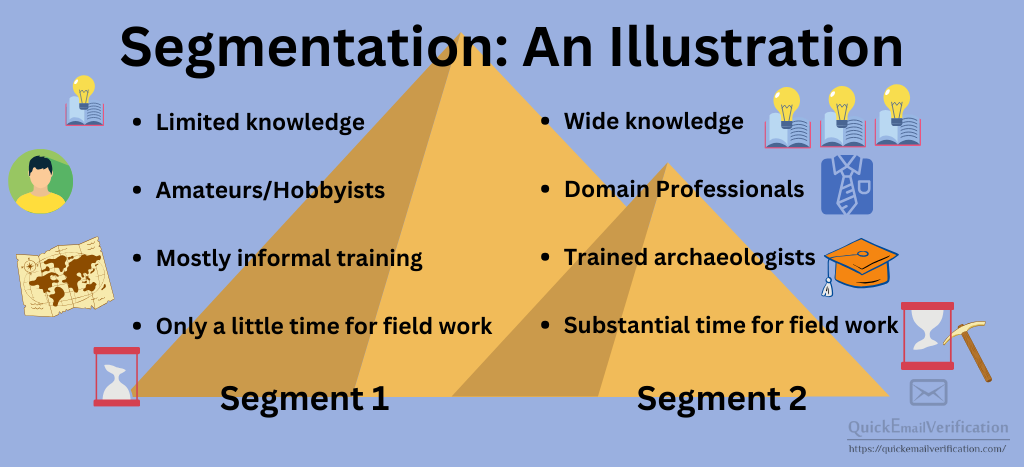
The second segment should have received more complex information that would be directly correlated with each recipient’s field of expertise. Using dynamic content would make perfect sense in a case like this. Dynamic content can “transform” according to each recipient, making it easy for marketers to create one campaign for all.
After that, they can use custom fields with specific values that will dictate the type of content the recipient will see.
When personalizing your event email marketing campaign, you can be as detailed or generic as you want. Sometimes, using the recipient’s first name will do the trick. But there will be times you’ll need to dig a little deeper.
Don’t hesitate to use all arrows in your quiver. The recipient’s location, first name, or education level could be data you could use when personalizing your campaigns.
But you could still dig a little deeper with the help of AI and machine learning. AI and machine learning tools can help you create segmented and personalized campaigns that correspond with your users on a one-on-one level with content that stems from an actual user action.
Event Email Marketing Sequences
Let’s assume that your email list is now pruned, segmented, and has personalized email templates. Does this mean that you’re ready to send out your first event email marketing campaign?
The answer to that would be no, sadly. You cannot send out any campaigns before creating an automation sequence that makes sense. Nor should you start without testing out your email marketing content.
Automated sequences take various data into account. However, the most important thing is that they stem from a natural action that a user makes when interacting with your brand, as mentioned above. Not to mention that using a “Set in and forget it” method will allow you to tackle more critical problems than sending out emails manually.
You can use any trigger to fire up your automation and make it work for your audience. But first, you need to consider the types of emails you would like users to receive.
The below infographic on email sequence for events summarizes the entire email campaign.

The Welcome Email and Event Announcement
The first email should be a welcome email. Making users feel welcome and familiarizing them with your brand is essential, especially when you want them to register for one of your upcoming events. Welcome emails are here to build awareness and tell your brand’s story in a couple of lines.
After that, go for the event announcement. Make it stand out with a catchy subject line that uses the user’s name and data from their latest interaction with your brand.
Let’s assume they clicked through your welcome email and have landed on a specific page of your website. You can use that for the first event you’ll promote to them. Make sure to give them a special discount on your event’s tickets as your “welcome gift”.
Include all necessary details in that email. Who are the keynote speakers? What is the topic about? Don’t be stingy with information, but don’t be too explanatory, either. Entice your openers by showing your event’s real value, not just the monetary one.
The Thank You Email and Reminder Emails
The “Thank You” email should follow every purchase, and this is what you need to do with yours as well. Users expect their receipt. It makes the brand look real and puts their mind at ease. And your organization’s event is no exception.
Make sure to send a reminder email on the day of the event. A couple of hours before it starts would be ideal for you and your audience – especially if your event has no entrance fee.
The last email in your sequence should be a follow-up email. Your event email marketing will not be complete without it, especially if you consider the fact that participants love to feel valued and respected.
A follow-up email that asks for the participant’s experience and provides a little extra something – a presentation, a whitepaper, an ebook, anything of value – can keep the conversation going and help you collect material and information for your next event. So, engage users and gently lead them further down the funnel.
Always Test Your Event Email Marketing Campaigns
Creating segments and email sequences, automating processes, using fancy email subject lines, none of those matter if your audience doesn’t care for these things. This is where testing comes to save the day.
A/B testing is a foolproof method to keep everything in check regarding your event’s email marketing promotion. So, create two versions of the same email but change one key component. It could be anything, from an emoji on your subject line to a header image or typography.
Just make sure you’re changing just one component. Otherwise, you could get lost in analyzing your data and identifying the component that made the difference.
Understanding the data from your A/B testing campaigns can help you improve your event email marketing campaigns as a whole. Study your data diligently.
Super Pro Tip: Run an A/B test when it’s actually worth it. If your audience is too homogenous at that stage, your email list is small, or the event you’re promoting is too niche, it would be best to save your time and testing effort for a more complex event that includes different segments.
The Takeaway
Email marketing has come a long way. As we saw before, it is now among the top-three methods for event promotion, according to marketers. But it’s a long way before you can set up a campaign and forget it.
Make sure to attract the right crowd, prune and segment always, personalize and test, and you’ll see your attendance rate grow in no time.

